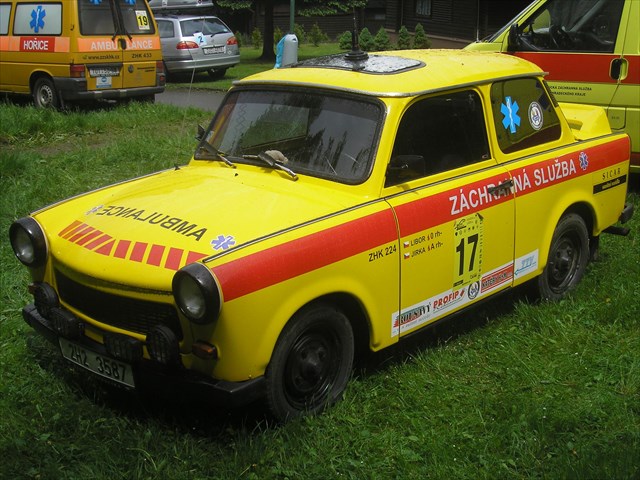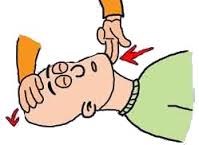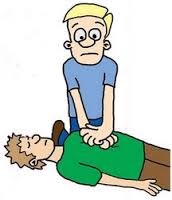Wikipédia uvádza, že prvou obeťou automobilovej nehody na svete bola Mary Ward, írska amatérska prírodovedkyňa. Zahynula pod kolesami auta poháňaného parou 31. augusta 1869. O necelých tridsať rokov neskôr vo Veľkej Británii - a to 17. augusta 1896 - bola Bridget Driscoll prvým chodcom na svete, ktorý zahynul pod kolesami auta poháňaného benzínom.
Štyridsaťštyriročnú matku dvoch detí zrazilo auto na ceste do divadla. Žena podľahla ťažkým zraneniam na mieste nehody. Očití svedkovia tvrdili, že automobil, riadený mladým mužom, išiel "nehorázne rýchlo" - až 6,4 míle/hod. teda 13 kilometrov za hodinu. Bola to dvojnásobná rýchlosť, akú mohlo auto podľa testu výrobcu vydržať. "Šialenou jazdou" chcel vodič údajne zaimponovať istej mladej dáme. Vyšetrujúci sudca mladého šoféra vraj napomenul, že "takéto čosi sa ešte raz nesmie zopakovať." Odvtedy pri dopravných nehodách zomrelo podľa štatistík na svete okolo 20 miliónov ľudí. Vyše polovica usmrtených nie sú vodiči, ba ani posádka havarovaného vozidla. Denne na cestách o život prichádza okolo 3 000 osôb. Dopravné nehody predstavujú prvú príčinu úmrtnosti ľudí vo vekovej hranici 15-29 rokov. Konštatovala to Svetová zdravotnícka organizácia (WHO) na svojej internetovej stránke.
Na Slovensku sa vedie štatistika dopravných nehôd od roku 1966. http://www.minv.sk/swift_data/source/policia/dopravna_policia/statistika_dn/ine_2012/Prehlad%20DN%201966%20-%202012%20nasledky%20alkohol%20chodci%20cyklisti.pdf
-------------------------------------------------------------------------

Čo však robiť ak sme svedkami dopravnej nehody (event. iného nešťastia)? V prvom rade netreba podľahnúť panike a skôr ako začneme s poskytovaním prvej pomoci, je nevyhnutné aktivovať tzv. reťaz života. V dobe mobilných telefónov by to nemal byť žiaden problém. Vytočíme 155 (priamo záchrannú zdravotnú službu) alebo 112 (integrovaný záchranný systém), a nahlásime presne: - miesto udalosti, počet zranených, približne o aký typ zranenia sa jedná. Operátor- záchranár na druhom konci linky, si cielenými otázkami, na ktoré je treba odpovedať jednoducho a stručne, upresní situáciu, ktorú simultánne, ako s Vami hovorí zapisuje do PC. Nahlásené údaje okamžite vidí na obrazovke ďalší operátor, ktorý ešte v priebehu Vášho hovoru aktivuje záchranné zložky. To umožňuje operátorovi, s ktorým hovoríte zostať s Vami na linke a presne Vám radiť a inštruovať, čo máte ďalej robiť. Nebojte sa dlhšieho hovoru s operátorom, pomôže Vám zvládnuť situáciu, pomoc je už na ceste a linka je bezplatná.
Zopár praktických rád (ktoré v príručkách nie vždy nájdete):
V prvom rade je dôležité zistiť, či je zranený pri vedomí . Človek v bezvedomí nekričí, ani neodpovedá na otázky. Ak na slová nereaguje, treba vyskúšať bolestivý podnet, napríklad uštipnutím do ušnice. Ak sa ani vtedy nepohne, zistite či dýcha. Sledujte pohyby hrudníka, ale lepšie je priložiť dlaň tesne nad ústa a nos, kde môžete cítiť jemný prúd vzduchu. ( Vyskúšať sa dá na sebe...teraz ).
Jednoduchým hmatom –záklonom hlavy dvoma rukami (na čele a sánke) spriechodníte dýchacie cesty v každom prípade, aj u človeka v bezvedomí, ktorý síce dýchať navonok môže, ale nedostatočne. Pomáha aj jemné predsunutie dolnej čeľuste. Záklon zabráni „zapadnutiu“ jazyka, teda nie je potrebné jazyk vyťahovať, špendliť, či iným spôsobom liezť postihnutému do úst (okrem nutnosti vybrať prekážku, cudzí predmet ako kus železa, či vypadnutý umelý chrup). Takisto sa nezdržujte „filmovým“ hmataním pulzu na krku, či zápästí, pri oživovaní nedýchajúceho, to nie je podstatné... ak aj niečo nahmatáte, je to väčšinou prenesený Váš vlastný pulz.

Ak záklon hlavy nepomôže a prúd vzduchu nad ústami a nosom necítite, je nevyhnutné začať s resuscitáciou - poslednou šancou pre záchranu. Postihnutého uložiť na chrbát , na pevnú podložku a začať s vonkajšou masážou srdca. Spočíva v pravidelnom stláčaní hrudníka v strednej časti hrudnej kosti (medzi prsnými bradavkami), na sebe položenými oboma dlaňami a vystretými lakťami, do hĺbky 4-5cm.

Na dosiahnutie „ pumpovacieho efektu“ potrebujeme frekvenciu stláčaní okolo 100/min.(dá sa to doma nacvičiť -na rytmus Vašej obľúbenej piesne, napríklad „Jedna druhej riekla“). K resuscitácii patrí okrem masáže srdca aj umelé dýchanie z úst do úst. Pomer medzi stlačením hrudníka a dýchaním má byť 30:2. Avšak nie každý dokáže dýchať priamo do úst cudziemu človeku, zvlášť keď je zakrvavený, pozvracaný, môže byť nositeľom infekčného ochorenia a podobne. Pre odvážnejších – vždy použite priedušnú handričku (vreckovku), pre ostatných- dýchanie z úst do úst robiť nemusíte, ak budete robiť vonkajšiu masáž. Pri správnom stláčaní hrudníka sa zbytkový kyslík dostane kam je treba. Teda masírovať, masírovať až do príchodu záchranky. Dôležitou súčasťou prvej pomoci je aj zastavenie krvácania. Autolekárnička s obväzovým materiálom je povinnou výbavou každého auta, teda ranu stlačiť, obviazať, prípadne zaškrtiť nad miestom krvácania, by nemal byť problém. Pomáha aj polohovanie, zdroj krvácania by mal byť nad úrovňou srdca ( krvácajúcu ruku v sede zdvihnúť, krvácajúcu nohu v ľahu podložiť a podobne).
A nakoniec veľmi dôležité – nikdy nezabúdajte na vlastnú bezpečnosť. Ak sa pohybujete v okolí nehody, mali by ste mať na sebe reflexnú vestu. Vhodné je vytiahnuť kľúče zo zapaľovania havarovaného auta, predchádzate tým riziku možného výbuchu. Chráňte deti pred zbytočne traumatizujúcim pohľadom, takisto slabšie povahy, kolabujúce pri pohľade na krv, aby záchranka nemusela mať o pacienta naviac.
Všetko tu uvedené aj ostatné správne kroky si pamätať nemusíte. Operátor linky 155 Vám vždy presne povie, čo máte robiť, ale ak si zapamätáte aspoň niečo, poprípade „nasucho nacvičíte“ doma na plyšovej hračke, môže to pomôcť Vám... lepšie sa zvláda stresová situácia, ak nie je úplne neznáma. Niekedy stačí hmlistá predstava, čo sa bude diať, ktorá Vám pomôže dostať zo seba to najlepšie, ušetriť tak vzácny čas a v konečnom dôsledku niekomu zachrániť život.
V každom prípade niet sa čoho báť, zachrániť ľudský život je jeden z najkrajších pocitov, ktorý vo Vás navždy ostane a nemôžeme opomenúť ani fakt, že neposkytnutie prvej pomoci vážne znižuje šance na prežitie pacienta a môže mať aj právne dôsledky.
Výpočet súradníc: N 48.12. (ABC); E 017.30.(DEF) – dosaďte čísla v zátvorkách za správnymi odpoveďami jednotlivých otázok z testu...
Otestujte sa:
A.Telefónne číslo záchrannej zdravotnej služby je:
a) 112 (1)
b) 155 (3)
c) 158 (5)
B.Pomer stlačení hrudníka a umelého dýchania je:
a) 30 : 2 (0)
b) 30 : 5 (2)
c) 15 : 2 (9)
C.Správne miesto na masáž srdca je:
a) V oblasti srdca, na ľavej strane hrudného koša (7)
b) V oblasti nad bruchom, kde končí hrudná kosť (4)
c) Medzi prsnými bradavkami (1)
D.Čas jedného stlačenia a uvoľnenia pri masáži srdca je cca:
a) 1 sekunda (0)
b) 1,5 sekundy (1)
c) 0,5 sekundy (2)
E.Na spriechodnenie dýchacích ciest je prvoradé:
a) Vyčistenie ústnej dutiny od mechanických prekážok (0)
b) Vytiahnutie jazyka (1)
c) Prefackanie postihnutého (8)
F.Pri viacerých poranených osobách uprednostníme:
a) Kričiaceho od bolesti (6)
b) Nepohnute ležiaceho, dýchajúceho (1)
c) Nehybného s modrou tvárou, bez topánok (5)
English version:
Wikipedia states that the first traffic accident victim in the world was Mary Ward, Irish amateur naturalist. She died underneath the wheels of a steam-powered car on 31st August 1869. Not even 30 years later in Great Britain- 17th August 1896-Bridget Driscoll became the first pedestrian in the world to die underneath the wheels of a petrol-powered car. 44-year-old mother of two children was hit by the car on her way to the theatre. The woman died immediately due to her injuries. Witnesses claimed that the car, driven by a young man, was going at outrageous speed- 6.4 miles/hour which is 13 km/h. It was double the speed the car was able to withstand according to its producer. It is said that the young man was using this „insane driving“ to impress some young lady. Investigating judge reprimanded the young driver to never again repeat this situation. Since then according to statistics around 20 million people were killed in traffic accidents. More than half of the killed are not the drivers or even the passenger of the crashed cars. Daily around 3000 e people lose their lives because of traffic. Traffic accidents represent the number 1 reason for the death of people aged 15-29 years. This was stated by the World Health Organisation (WHO) on its website. In Slovakia the statistics of traffic accidents is listed since 1966.
However what to do when we are witnesses to a traffic accident (eventually other misfortune)? The first and most important thing is not to panic and before we begin with first aid, it is necessary to activate so-called chain-of-life. It should not be any problem in the era of mobile phones. We call 155 (emergency medical service) or 112 (integrated rescue system) and precisely report: the place of the accident, the number of injured, approximately what type of injury there is. The operator- the rescue worker on the other end of line, asks targeted questions which need to be answered simply and briefly to specify the situation which he simultaneously types into computer as he talks with you. Reported data is immediately seen on the screen by other operator who activates rescue teams during your call. This enables the operator who is talking with you to stay on the line and directly advice and instruct you what you should be doing next. Do not be afraid of a longer call with the operator, it will help you to manage the situation, the help is already on its way and the call is free.
Some practical advice (which won´t be find in tutorials):
Firstly, it is important to find out whether the injured is conscious. The unconscious person does not shout nor answers any questions. If the person does not react to words, a painful stimulus need to be tried such as pinching the ear. If even that does not cause any movement, try to find out whether the patient is breathing. Observe the chest movements, but it is better to put your hand closely above the mouth and nose where you can feel a soft current of air. (You may try on yourself....now). By a simple movement- tilting the head backwards with both hands (on the forehead and jaw) the airways will be feasible in any case, even with an unconscious person who can outwardly breath but inadequately. Even a soft movement of lower jaw forwards helps.
The tilting of the head prevents the tongue to fall into throat- therefore sticking the tongue out is not necessary or in other way go into the patient´s mouth (except in the case of taking out an obstacle, a foreign object such as a piece of iron or a dislodged denture). Also it is not necessary to waste time with looking for a pulse on the neck or wrist when resuscitating because it is not important... even if you can feel the pulse, in most cases it is your own you are feeling. If the tilting of the head does not help, and you cannot feel the air current above the mouth and nose, i tis necessary to begin with resuscitation- the last chance for rescue.The injured should be laid on his back on a solid support and the heart massage should begin.It is done by regular chest compression in the middle part of chest (inbetween the nipples) using both palms superimposed together and with straight elbows, to the depth of 4-5 cm. To gain the pumping effect, the frequency of compression around 100/minute is needed (it can be practiced at home to the rhathm of your favourite song).
The resuscitation consists of 2 parts: the heart massage and the artificial breathing from mouth to mouth. The ratio between the chest compression and the breathing should be 30:2. However, not everyone is able to breath directly into the mouth of a stranger, especially if he/she is bloody, covered in vomit, can be a carrier of an infectuous disease etc. For the more adventurous- always use a breathable cloth (a handkerchief), for other- the breathing mouth to mouth is not necessary if you are doing the compressions. If the compressions are done correctly, the residual oxygen will get where its needed.. Therefore compressions, and continue until the ambulance arives.
The important part of the first aid is also to stop the bleeding. A first aid kid with some bandage material is a mandatory equipment of every car, therefore it should not be a problem to press the injury, bandage it, even strangle above the place of the bleeding. Positioning also helps, the source of bleding should be above the heart level (a bleeding hand should be lifted while sitting, a bleeding leg should be underlayed while lying down, etc) And in the end something very important- never forget about your own safety. If you are moving around the accident site, you should wear the reflex vest. I tis recommended to pull out the keys from the crashed vehicle- it can prevent the risk of potential explosion. Protect the children from unnecessary traumatic scene, also the weaker people who colaps at the sight of blood to ensure that there are no additional patients for the ambulance.
It is not necessary to remember everything that is stated here or other right steps. The operator of the 155 link will always tell you exactly what to do but if you remember something or even try it at home using a plush toy, it can help you... the streesful situation is easier to handle when i tis not completely foreign. Somethimes a vague idea is enough to help you get the best out of you, save a precious time and in the end save a life. In any case, there is nothing to be afraid of. To safe a human life is one of the most beautiful feelings in the world which stays with you forever and we cannot forget the fact that when the first aid is not given, the chances for survival of the patient are seriously lowered and there can be even legal consequences.
Coordinates calculation: N 48.12. (ABC); E 017.30.(DEF)
A. The phone number of emergency medical service is:
a) 112 (1)
b) 155 (3)
c) 158 (5)
B. The ratio of chest compression and artificial respiration is:
a) 30 : 2 (0)
b) 30 : 5 (2)
c) 15 : 2 (9)
C. The correct place to compress the chest is:
d) Around heart on the left side of chest (7)
e) Above abdomen where the chest bone ends (4)
f) Between the naples (1)
D. The time of one compression and relaxation during the chest compression is:
d) 1 second (0)
e) 1,5 seconds (1)
f) 0,5seconds (2)
E. The first thing to make airways feasible is:
d) Cleaning the mouth from mechanical objects (0)
e) Pulling out the tongue (1)
f) Slaping the injured (8)
F. In a case of multiple injured people the one taking precedence is:
d) The one shouting from pain (6)
e) The one who is unmovingly lying down and breathing (1)
f) The blue-faced unmoving one without shoes (5)